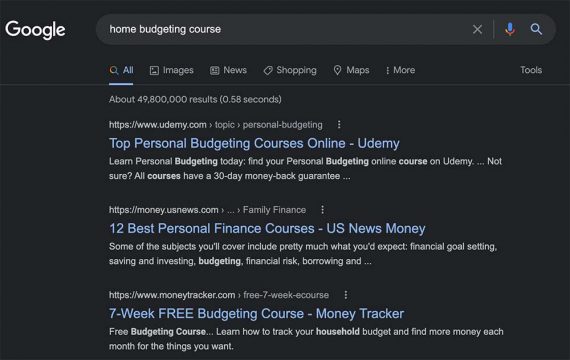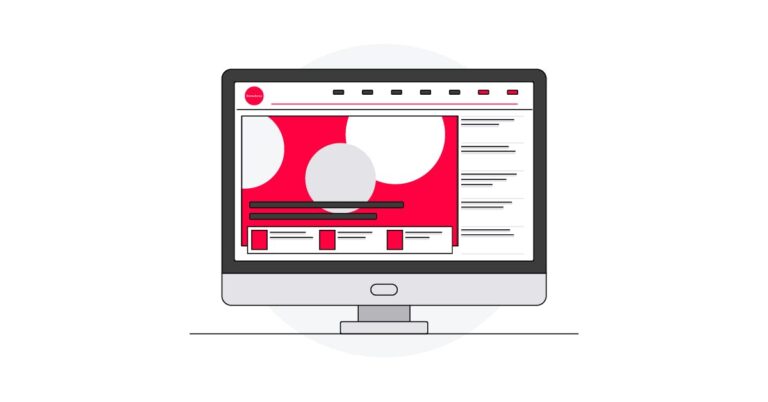An accountant who creates a home budgeting course has to fight for attention against the likes of Dave Ramsey, Duke University, Khan Academy, and 147 instructors on Udemy, all of which offer a budgeting course of some kind.
This Google search for “home budgeting course” illustrates the competition for online education. Creators face competition no matter the niche, seemingly.
In many cases, digital products are relatively inexpensive to produce, requiring expertise and effort rather than dollars and cents.
Making Money
Creators who want to earn a living making music, coaching, teaching, or blogging, as examples, have a few options for generating revenue. These include advertising, platform monetization, and selling a product.
The creator economy has a problem. There are certainly examples of creators who have risen to celebrity status and wealth — Khaby Lame (life hacks, TikTok), Charli D’Amelio (dancing, TikTok), and PewDiePie (comedy, YouTube) are all in this category. But the vast majority of vloggers, bloggers, podcasters, and the like don’t earn enough money to quit their day jobs and create full-time.
Or the product could be digital.
Creators have audiences. A YouTube channel that describes succulent gardening has an audience of viewers who consume the channel’s content in search of tips and tidbits about cultivating plants.
In short, digital products are appealing. A creator needs only to produce an ebook, song, illustration, or similar and start making money.
Other advantages include:
Digital Products
Advertising might include promoting the goods and services of third-party companies. Pat Flynn, the creator of Smart Passive Income, has earned more than million in affiliate commissions over several years. Flynn devotes time during podcast episodes or YouTube videos and space on his website to promote affiliate brands. When that promotion leads to a sale, he earns a percentage as commission.
- Downloadable music,
- Audio files,
- Art and graphics,
- Educational content,
- Recipes,
- Software tools and calculators,
- Content licenses,
- Paid newsletters,
- Ebooks,
- Memberships.
In this way, the combination of email marketing and digital products can help creators build their own audience and generate passive income.
That audience, however, belongs to YouTube. But a creator who attracts subscribers to a gardening newsletter is on his way to developing a first-party audience and potential customers for his digital products. Each newsletter could include content to nurture relationships and a call-to-action for selling a course, ebook, or similar.

- Passive income. Once created, a digital product can be sold repeatedly. Creators work once and get paid over and over.
- Scalability. Digital products have endless inventory, making them relatively easy to scale.
- High margins. The low cost of developing a digital product could equate to high profit margins.
- Low overhead. Digital products require no warehouse space and minimal staff or overhead.
Competition
Except there is a lot of competition.
Selling products and services is another option. Jon McCray, the host of the “Whaddo You Meme??” YouTube channel, sells physical merchandise such as t-shirts.
Thus making a digital product is not enough. The creator also needs to market it.

This could be done in many ways, but email marketing is among the most compelling.
While creators could try to up their TikTok, YouTube, or Instagram output to earn more, a practical solution may be digital products and email marketing.
Email Marketing
For example, an accountant could create a home budgeting course with little more than the information in her head and a webcam.
A list of engaged email subscribers is among the best promotional tools for creators who sell digital products. For many of those creators, it could also be a path toward earning a living.
Digital products have many advantages over physical goods and offer a compelling monetization alternative. Such products can take many forms, including:
Advertising could also include sponsors. Matt Brechwald, the host of the “Off-farm Income” podcast and a podcasting consultant, sells sponsorships to well-known brands in the farm industry, including LaCrosse boots and Powder River cattle equipment.
Creators could also generate income from social media platforms. YouTube shares advertising revenue with creators whose channels have met minimum requirements. This amounts to a few pennies per view. But it can add up.






